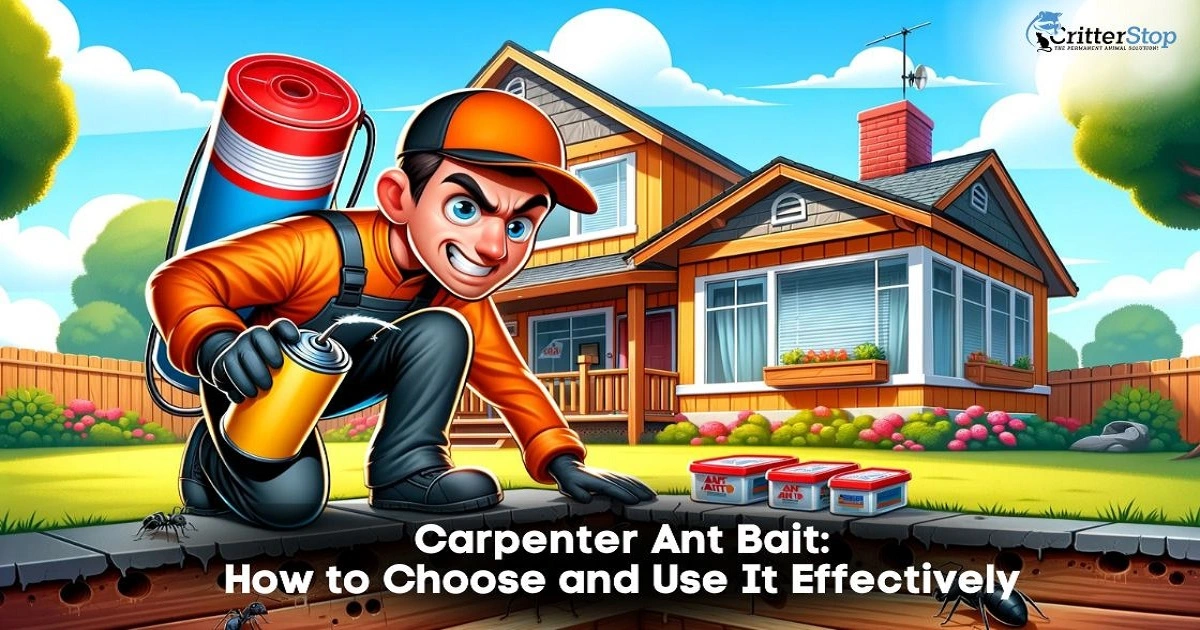
Carpenter ants are a household pest that can cause significant damage to wooden structures. They are known for excavating wood to create nests, which can weaken a building's structural integrity. One effective way to control carpenter ant infestations is to use carpenter ant bait.
Carpenter ant bait works by attracting ants to a toxic substance that they carry back to their nest, ultimately killing the colony. The bait is designed to be palatable to the ants so they readily consume it and spread it to other members of the colony. This method of pest control is often preferred over traditional insecticides because it’s less harmful to the environment and other non-target organisms.
When choosing a carpenter ant bait, consider the active ingredient and the bait's form. Some baits use insect growth regulators to prevent the ants from developing properly, while others use toxins that kill the ants outright. Bait can come as gels, granules, or stations, each with its own advantages and disadvantages. It’s important to follow the guidelines when using carpenter ant bait to ensure its effectiveness and safety.
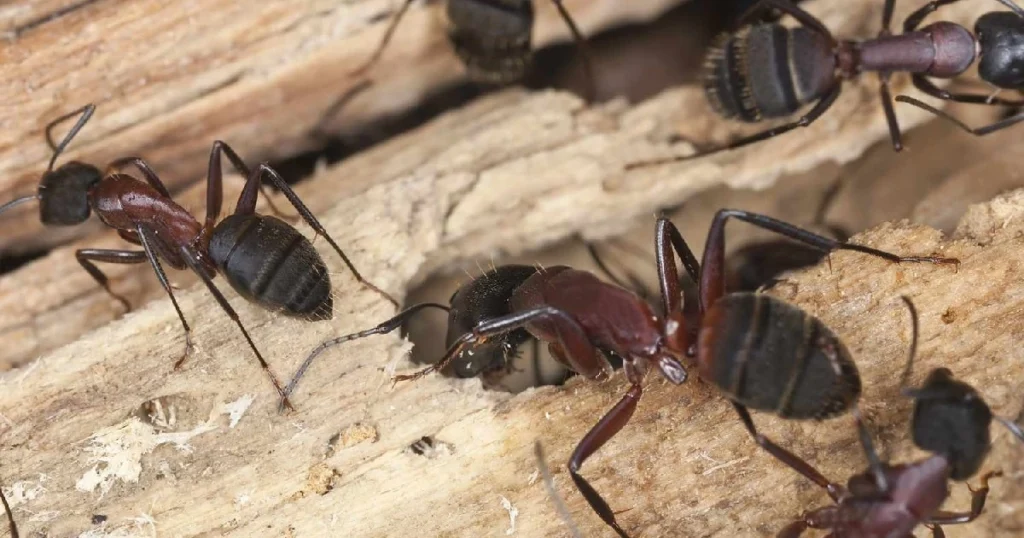
Carpenter ants can cause significant damage to structures. Understanding their behavior and habitat is key to effectively controlling them. We will cover basic information about carpenter ants, including their habitat, behavior, and identification tips.
Carpenter ants, also known as worker ants, are found throughout the United States and prefer to nest in moist, decaying wood. They will also nest in sound wood but prefer softened wood, especially if it’s been taken over by moisture or fungus. Carpenter ants also like spaces with high moisture content, such as leaky pipes, roofs, or windows. They will also nest in trees, stumps, and other outdoor structures.
Carpenter ants are active at night and are most active during the spring and summer months. Unlike termites, they forage for food, which can include sweets, meats, and other insects. Carpenter ants don’t eat wood, but they are strong enough to dig through it to create their carpenter ant nest. They create galleries and tunnels in wood, which weakens the structure and brings extra repair costs.
Identifying a black carpenter ant can be tricky, as they can vary in size, color, and physiognomy. However, there are some common characteristics to look for. Carpenter ants usually bear darker colors and have a constricted waist. They have large mandibles and antennae, and their bodies are divided into three segments.
One way to identify carpenter ant activity is to look for sawdust-like debris near wood structures. This debris is called "frass" and is created as the ants excavate wood to build their nests. Carpenter ants also create smooth, clean tunnels in wood, which can be seen with a flashlight or by tapping on the wood.
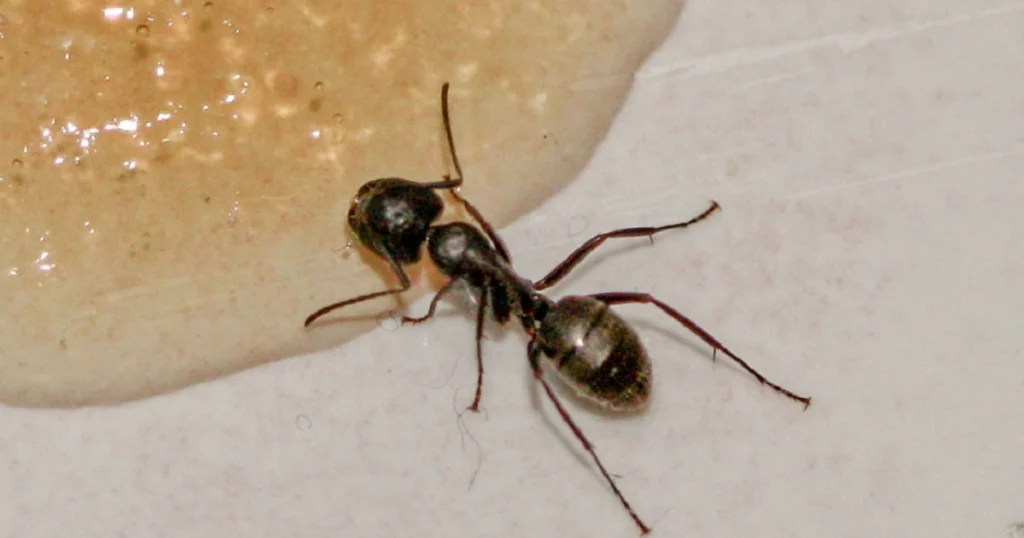
To effectively control carpenter ant colonies, the right type of bait must be used. Carpenter ant bait is designed to attract and kill carpenter ants. The bait contains a slow-acting poison that the ants will carry back to their nests, where it’s shared with the rest of the colony.
When choosing a carpenter ant bait, it is important to look for one that is designed explicitly for carpenter ants. The bait should contain a slow-acting poison and an attractant to lure the ants to it. Bait stations can be placed near areas of carpenter ant activity or a known carpenter ant colony. Places like windows and doors are the most known entry points.
Ants are powerful pests that can damage homes and structures. Carpenter ants can easily make their way through wooden structures over time. Effective ant bait is important to control and eliminate carpenter ant infestations.
Effective ant baiting involves using a bait that is specifically formulated to attract and help you get rid of carpenter ants. The bait should be placed in areas where carpenter ants are known to travel, such as along baseboards, windows, doors, and corner rooms.
People often wonder do ant baits work on carpenter ants? The answer is yes, but it’s important to use a bait that is specifically formulated for carpenter ants. This type of bait contains a slow-acting poison that allows the ants to carry it back to the colony, where it can be shared with other ants.
It’s important to note that ant bait is not a cut-and-dry solution to a carpenter ant infestation. It can take several weeks for the bait to work and eliminate the colony. However, using ant bait is an effective long-term solution.
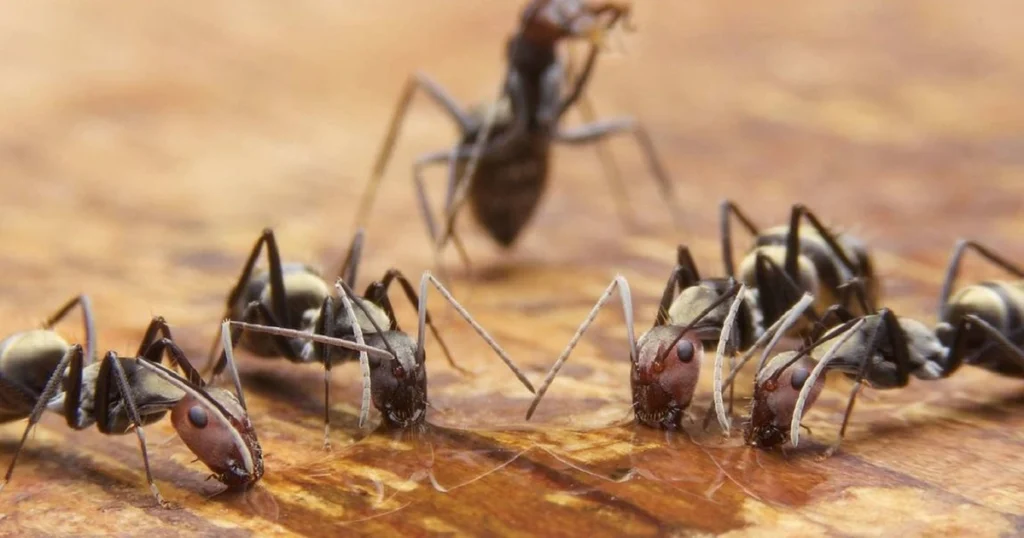
Carpenter ant baits are an effective way to control carpenter ant infestations. They work similarly to most commercial baits by attracting ants so they can help themselves to the bait and carry it back to their nest, killing the colony. Several types of carpenter ant baits are available in the market.
Gel baits are a popular choice for carpenter ant baiting. They come in a syringe or tube and are applied directly to surfaces where carpenter ants are seen. The gel is attractive to ants and is carried back to the nest by foraging ants. Gel baits are the easiest to use and can be applied in hard-to-reach areas.
Granular baits are another effective type of carpenter ant bait. They come in small pellets and are scattered around the infested area. The granules are attractive to ants and are carried back to the nest. Granular baits can be used both indoors and outdoors.
Liquid baits are a good option for carpenter ant infestations in areas where other baits cannot be used. They are applied directly to surfaces or in bait stations. Liquid baits are attractive to ants and are carried back to the nest.
When choosing a carpenter ant bait, consider the severity of the infestation and the location of the nest. Follow the label's guidelines to ensure the bait is used safely and effectively.
Overall, carpenter ant baits are an effective way to control carpenter ant infestations. By choosing the right type of bait and following the instructions carefully, homeowners can eliminate carpenter ants from their homes and prevent further damage to their property.
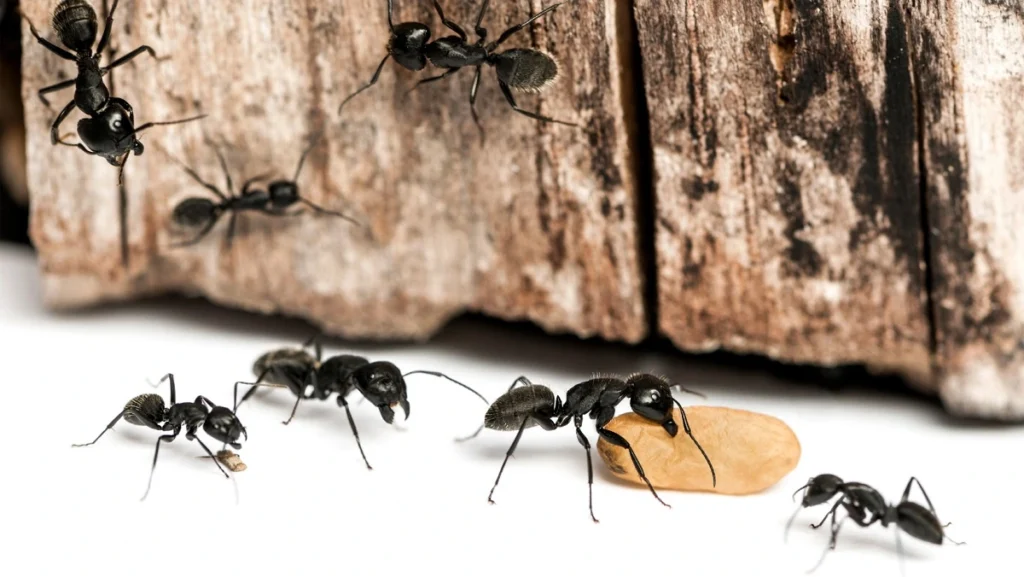
If you’re dealing with carpenter ants, choosing the right bait is crucial. The best bait for carpenter ants is one that is attractive to them and can effectively eliminate the colony. Here are some essentials to consider when choosing the best ant bait for carpenter ants:
The most important factor to consider is the active ingredient in the bait. Remember that something with fast action won’t work. You want the ants to carry the bait to their colony, which helps eliminate the entire colony and prevent future infestations. Look for baits that contain boric acid, fipronil, or hydramethylnon, as these are effective against carpenter ants.
The bait's formulation is also important. Carpenter ants prefer sweet and protein-based foods, so choose a bait that contains both. Bait stations are a popular choice as they protect the bait from the environment and keep it fresh. Gel baits are also effective as they can be applied directly to areas where carpenter ants are active.
Proper placement of the bait is crucial for its effectiveness. Place the bait near areas where carpenter ants are active, such as along walls, in corners, and near entry points. Avoid placing the bait near areas where food is prepared or consumed, as this can contaminate the food.
Safety should always be a priority when selecting the best bait for carpenter ants. Choose baits that are labeled for indoor use and follow the instructions carefully. Keep the bait away from children and pets.
By considering these factors, you can choose the best bait for carpenter ants and effectively eliminate the infestation.
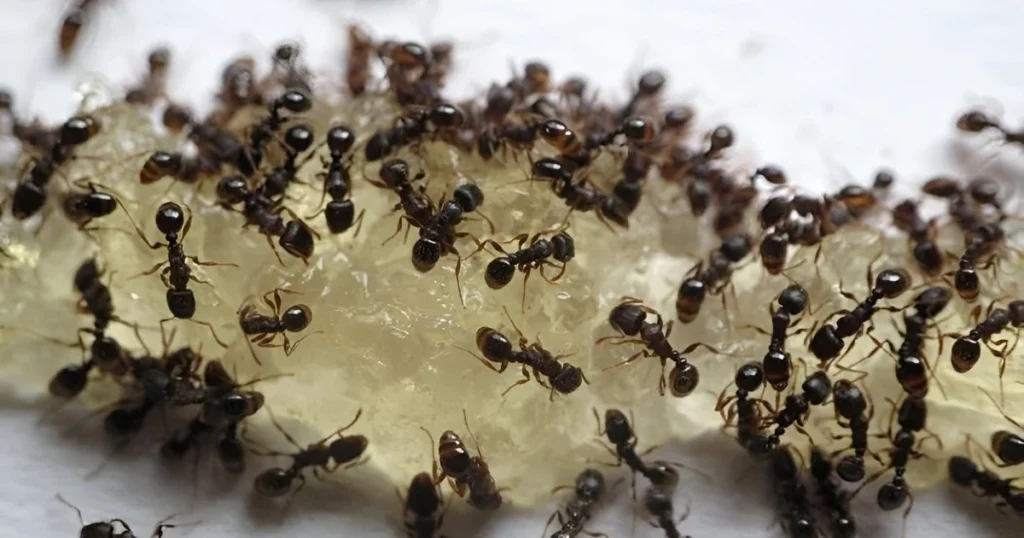
Proper placement is key to achieving the best results when using carpenter ant bait stations. The following subsections cover the recommended indoor and outdoor placement of bait stations.
For indoor placement, it is recommended to place carpenter ant bait stations in areas where ants are commonly seen, such as baseboards, corners, and entry points. It’s also important to place bait stations near areas where ants may be nesting, such as behind appliances or in wall voids.
Carpenter ant traps can also be used indoors, particularly in areas where bait stations may not be practical, such as in cabinets or pantries. These traps should be placed in areas where ants are commonly seen but away from food and cooking areas.
For outdoor placement, carpenter ant bait stations should be placed around the perimeter of the home, particularly near areas where ants may be entering the home, such as around doors and windows. Bait stations can also be placed near trees, stumps, and other areas where carpenter ants may nest.
It is important to note that bait stations should be placed in areas that are not easily accessible to children and pets. Additionally, bait stations should be checked regularly and replaced as needed to ensure effectiveness.
Overall, proper placement of carpenter ant bait stations is crucial to successfully controlling ant infestations. With the right placement and regular maintenance, homeowners can effectively eliminate carpenter ants from their homes and outdoor spaces.
When it comes to carpenter ant bait, there are two main types of products to choose from: bait traps and bait stations. Both are designed to attract and kill carpenter ants, but they do the job in different ways.
Carpenter ant bait traps are small containers filled with a sweet liquid that attracts ants. Once the ants enter the trap, they consume the bait and share it with other ants in the colony. The bait also contains a slow-acting poison that eventually kills the entire colony.
Bait traps can be placed anywhere that ants are present. They are inexpensive and can be bought at most hardware stores or online. However, they may not be as effective as bait stations in controlling large infestations.
Bait stations are larger containers that are filled with a similar sweet liquid bait. However, they are designed to be placed outside near the colony. The ants are attracted to the bait and return it to the colony. Like bait traps, the bait contains a slow-acting poison that eventually kills the entire colony.
Bait stations are generally more effective than bait traps, especially for larger infestations. They are also safer for pets and children, as they are designed to be tamper-proof and can be placed out of reach.
When choosing between bait traps and bait stations, keep in mind the size of the infestation and the location of the colony. For smaller infestations, bait traps may be sufficient, but for larger infestations or outdoor colonies, bait stations are likely to be more effective. For better results, it’s important to choose a high-quality carpenter ant bait, such as the best carpenter ant bait traps.
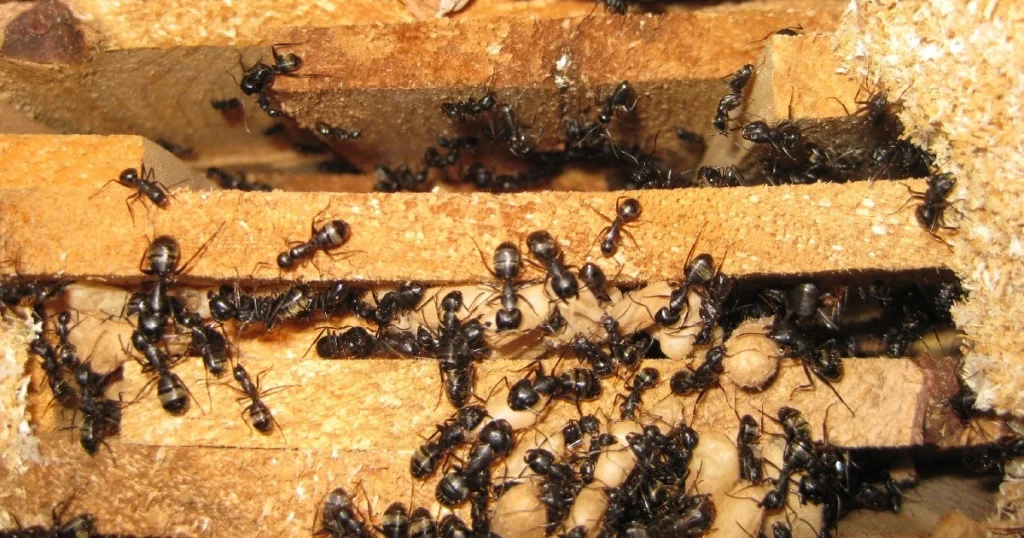
For people preferring a more hands-on approach to baiting carpenter ants, there are several DIY solutions available. These solutions are often less expensive than commercial baits and can be made with common household items.
One popular DIY bait solution involves mixing equal parts of borax and powdered sugar. The powdered sugar attracts the ants, while the borax acts as a poison that kills them. This mixture can be placed in small containers or sprinkled directly on ant trails.
Another DIY option is to use a mixture of honey and boric acid. The ants are attracted to the sweet honey, but the boric acid is a slow-acting poison that eventually kills them. This mixture can be applied to small pieces of cardboard or directly on ant trails.
A third DIY solution involves mixing peanut butter and borax. The peanut butter acts as a bait to attract the insects, while the borax poisons them. This mixture can be placed in small containers or applied directly to ant trails.
It is important to note that while DIY bait solutions can be effective, they are as potent or long-lasting as commercial bait. These measles can be dangerous, so please be cautious when handling and applying any type of bait, as some can be harmful to children or pets if ingested.
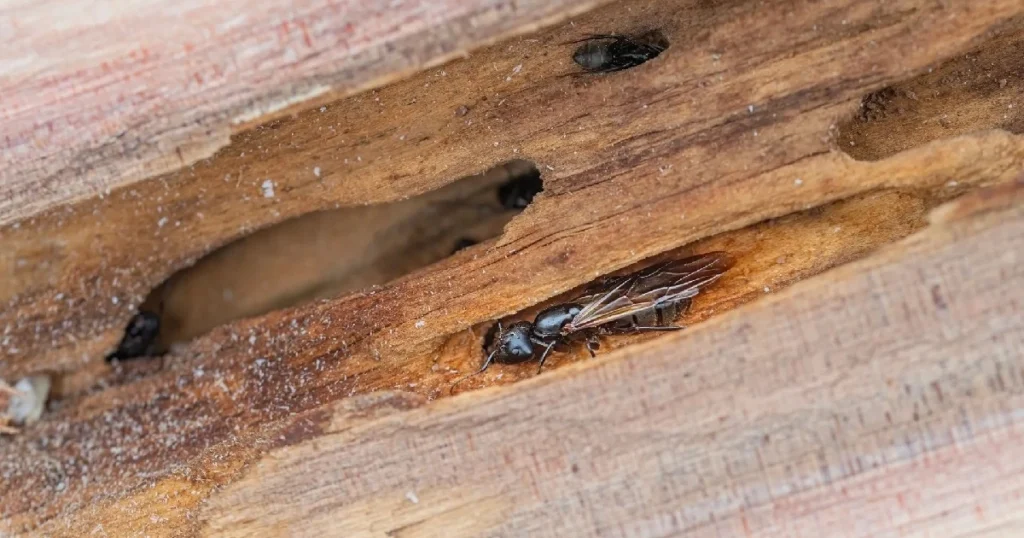
Prevention is key when it comes to carpenter ant infestations. Here are some actions to take to avoid having carpenter ants uninvited to your property:
Regular maintenance is also important in preventing carpenter ant infestations. Here are some tasks that should be done regularly:
Using the best traps for carpenter ants can also be an effective way to control an infestation. However, to get better results, it’s important to use them with a proper strategy and in conjunction with other pest control methods.
When dealing with a carpenter ant infestation, it’s important to know when to call in a professional pest control service. While DIY methods may do the job for small infestations, a large presence of carpenter ants or their presence in hard-to-reach areas is going to require the expertise of a professional.
If the carpenter ant infestation is widespread or has been ongoing for a long period of time, then you have to make the call. If you’re in Texas, the best option for you is Critter Stop. Our company does a free inspection to examine the level of infestation present in your property, and they will let you know what’s needed to deal with it.
Professional pest control services like Critter Stop typically begin by inspecting the affected area to determine how bad is the ant problem. We’ll use specialized tools, such as thermal imaging cameras, to detect hidden colonies. Once we determine the extent of the infestation, we’ll develop a treatment plan tailored to the specific needs of the situation.
When selecting a professional pest control service, it’s important to choose a reputable company with experience treating carpenter ant infestations. Critter Stop has the reputation you seek when you need pest control professionals. You can read our online reviews or give us a call at (214) 234-2616 to take care of your ant problem.
Safety Considerations
When using carpenter ant bait, safety must always be a top priority. Here are the most essential considerations you must remember:
It's worth noting that while some people may try to use mosquito repellent as a substitute for carpenter ant bait, this is not recommended. Mosquito repellent is not designed to be effective against ants, and using it in this way could be dangerous. Instead, it's best to stick with high-quality carpenter ant bait products, such as the best carpenter ant traps, that are specifically designed for this purpose.
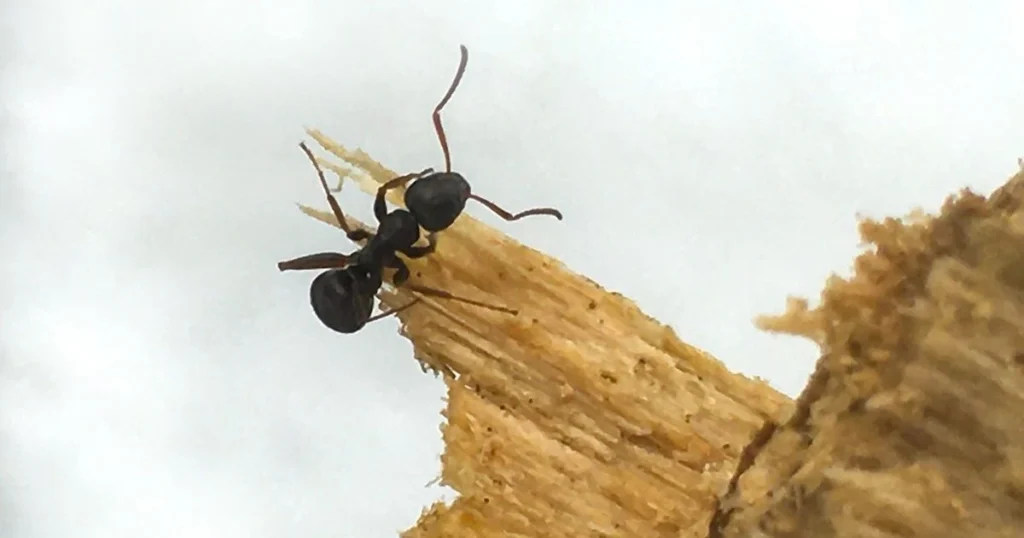
Once the carpenter ant bait has been applied, it is important to monitor the bait stations to ensure they are still effective. This can be done by checking the bait stations periodically to see if they have been emptied or if the bait has become contaminated. If the bait has been consumed or contaminated, it should be replaced with fresh bait.
It is important to note that the effectiveness of ant baits for carpenter ants can vary depending on several factors, including the type of bait used, the size of the infestation, and the location of the bait stations. Therefore, it may be necessary to reapply the bait to get the expected results.
When reapplying the bait, it is important to follow the manufacturer's instructions carefully. This may include placing the bait stations in different locations or using a different type of bait. It is also important to ensure that the bait stations are clean and free from any debris or other contaminants that may interfere with the effectiveness of the bait.
In order to maximize the effectiveness of ant baits for carpenter ants, it is recommended that they be used in conjunction with other pest control measures, such as removing sources of food and water, sealing cracks and crevices, and removing any wood or other materials that may be attracting the ants. By taking a comprehensive approach to pest control, it is possible to effectively manage carpenter ant infestations and prevent them from causing further damage to your home or property.
Homemade carpenter ant baits can be an effective way to control an infestation. Some ingredients that are commonly used in homemade baits include boric acid, honey, sugar, and peanut butter. Boric acid is particularly effective as it is toxic to ants but not to humans or pets. However, it is important to note that homemade baits may not be as effective as commercial baits and may take longer to work.
There are many commercial ant baits available on the market, but not all of them are effective against carpenter ants. Some of the best ant baits for carpenter ants include Terro Ant Killer Baits, Combat Ant Killing Bait Strips, and Maxforce Carpenter Ant Bait Gel. These baits contain ingredients that are attractive to carpenter ants and are designed to be carried back to the colony, where they will be shared with other ants, ultimately leading to the eradication of the colony.
Bait stations are an effective way to target carpenter ants. Place them in areas where carpenter ants are known to be active, such as near windows, doors, and baseboards. It is important to use enough bait stations to cover the entire area where the ants are active. The bait stations should be checked regularly and replaced as needed.
One sign that ant bait is working against carpenter ants is a decrease in ant activity. As the bait is carried back to the colony, the number of ants seen around the bait station should decrease. Another sign that the bait is working is the presence of dead ants around the bait station. It is important to note that it may take several weeks for the bait to eradicate the colony completely.
The length of time it takes for carpenter ant bait to eradicate a colony can vary depending on the size of the colony and the effectiveness of the bait. In general, it can take several weeks for the bait to eradicate a colony completely. It is important to be patient and continue to monitor the bait stations until all signs of ant activity have ceased.
Both gel baits and granular baits can be effective for carpenter ant control. Gel baits are easy to apply and can be placed in hard-to-reach areas, while granular baits can be spread over a larger area. Ultimately, the effectiveness of the bait will depend on the specific product and the severity of the infestation. It is important to read the label and follow the manufacturer's instructions for best results.
Visit our Critter Library and learn more about our furry friends